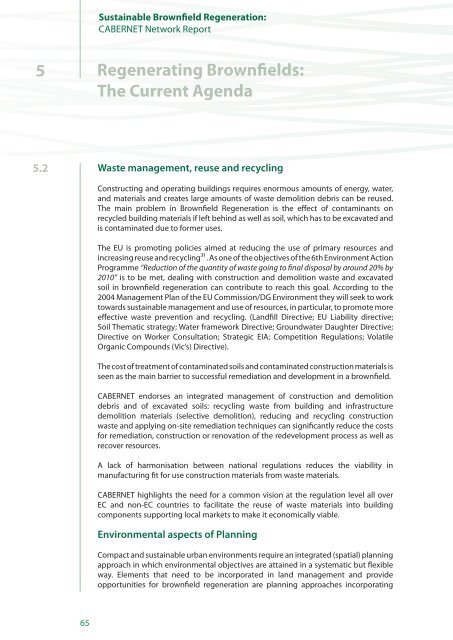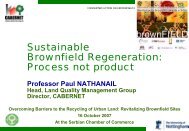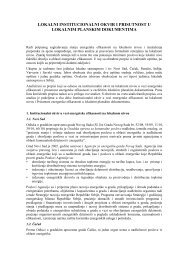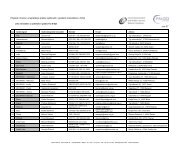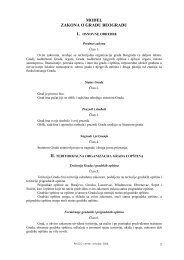Sustainable Brownfield Regeneration: CABERNET Network Report
Sustainable Brownfield Regeneration: CABERNET Network Report
Sustainable Brownfield Regeneration: CABERNET Network Report
Create successful ePaper yourself
Turn your PDF publications into a flip-book with our unique Google optimized e-Paper software.
<strong>Sustainable</strong> <strong>Brownfield</strong> <strong>Regeneration</strong>:<strong>CABERNET</strong> <strong>Network</strong> <strong>Report</strong>5Regenerating <strong>Brownfield</strong>s:The Current Agenda5.2 Waste management, reuse and recyclingConstructing and operating buildings requires enormous amounts of energy, water,and materials and creates large amounts of waste demolition debris can be reused.The main problem in <strong>Brownfield</strong> <strong>Regeneration</strong> is the effect of contaminants onrecycled building materials if left behind as well as soil, which has to be excavated andis contaminated due to former uses.The EU is promoting policies aimed at reducing the use of primary resources andincreasing reuse and recycling³¹ . As one of the objectives of the 6th Environment ActionProgramme “Reduction of the quantity of waste going to final disposal by around 20% by2010” is to be met, dealing with construction and demolition waste and excavatedsoil in brownfield regeneration can contribute to reach this goal. According to the2004 Management Plan of the EU Commission/DG Environment they will seek to worktowards sustainable management and use of resources, in particular, to promote moreeffective waste prevention and recycling. (Landfill Directive; EU Liability directive;Soil Thematic strategy; Water framework Directive; Groundwater Daughter Directive;Directive on Worker Consultation; Strategic EIA; Competition Regulations; VolatileOrganic Compounds (Vic’s) Directive).The cost of treatment of contaminated soils and contaminated construction materials isseen as the main barrier to successful remediation and development in a brownfield.<strong>CABERNET</strong> endorses an integrated management of construction and demolitiondebris and of excavated soils: recycling waste from building and infrastructuredemolition materials (selective demolition), reducing and recycling constructionwaste and applying on-site remediation techniques can significantly reduce the costsfor remediation, construction or renovation of the redevelopment process as well asrecover resources.A lack of harmonisation between national regulations reduces the viability inmanufacturing fit for use construction materials from waste materials.<strong>CABERNET</strong> highlights the need for a common vision at the regulation level all overEC and non-EC countries to facilitate the reuse of waste materials into buildingcomponents supporting local markets to make it economically viable.Environmental aspects of PlanningCompact and sustainable urban environments require an integrated (spatial) planningapproach in which environmental objectives are attained in a systematic but flexibleway. Elements that need to be incorporated in land management and provideopportunities for brownfield regeneration are planning approaches incorporating65


